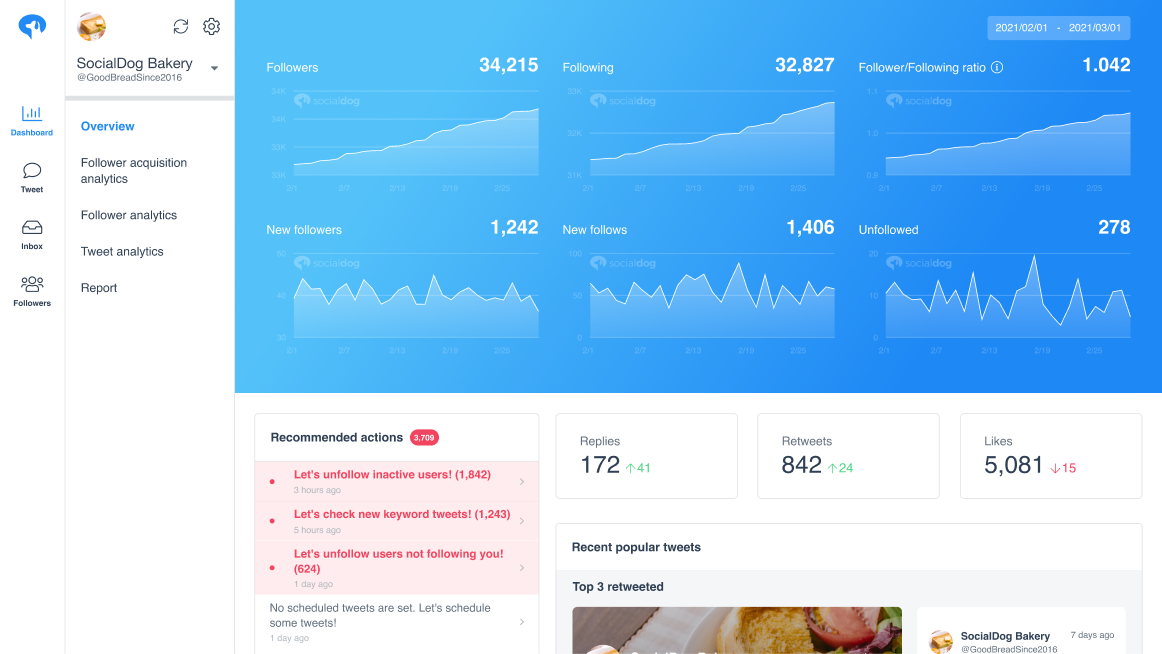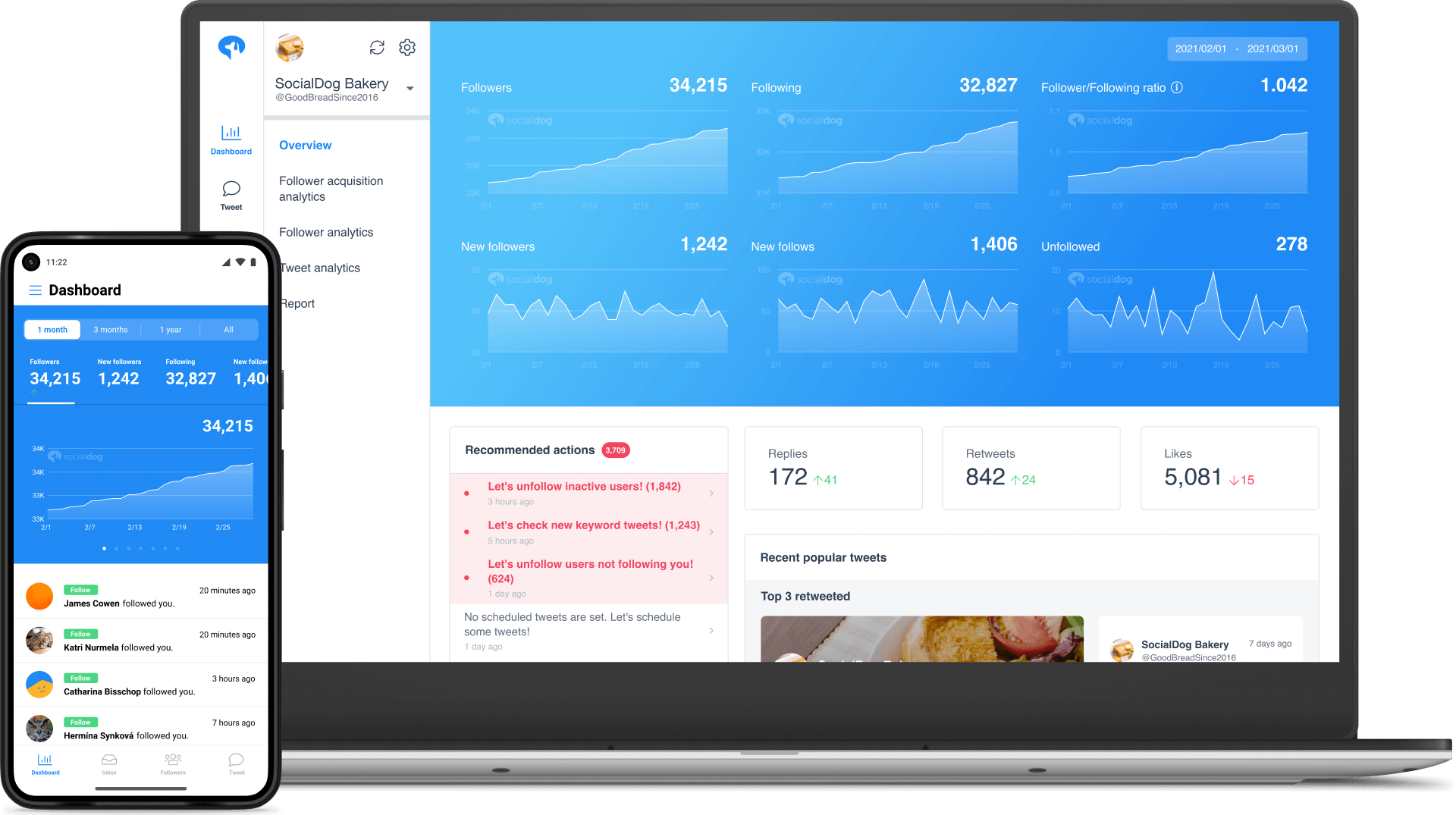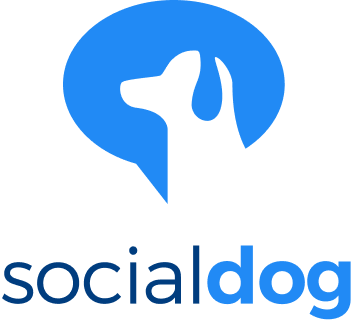- How to Use Google Analytics to Boost Twitter Ads Performance
How to Use Google Analytics to Boost Twitter Ads Performance
Twitter makes up a major share of internet traffic today, letting marketers reach over 544.5 million people with targeted ads. It is estimated that by 2028, social media ad spending will double and surpass $262 billion.
Making Twitter Ads part of your marketing plan can do wonders for your brand. However, a recent study found that only 43% of marketers use Twitter to market their businesses. And out of those who do, most marketers are unaware of how to effectively measure their ad campaigns.
But how can marketers track Twitter Ads without spending an arm and a leg on software or tools? A simple integration with Google Analytics will suffice.
Here’s how Google Analytics works with Twitter Ads, why you should use it, and how the two platfoms relate to each other.

Contents
Can Google Analytics Track Twitter Ads?
Yes, you can track Twitter Ads with Google Analytics and gain insights into their performance, making it easier to measure and optimize them. Google Analytics is a free web analytics tool that gives you a deeper dive into your Twitter account’s performance and traffic data. It offers insights into follower growth, tweet activity, and engagement, so you can tweak your Twitter marketing campaigns.
With Google Analytics URL Builder, you can create a tracking URL to track the performance of your Twitter Ads, including impressions and clicks. In addition to tracking visitors coming from Twitter Ads, it determines their ROI and identifies the top ads that are driving leads.
It is fairly easy to integrate Google Analytics with Twitter Ads, but if you switch over to Google Analytics 4 you’ll gain access to its full suite of measurement tools, offering you the opportunity to take advantage of its actionable, relevant customer insights.
6 Reasons to Use Google Analytics for Twitter Ads
Google Analytics measures the success of your Twitter ad campaigns, identifies key trends, and offers insights to increase efficiency, all in one place. Here are a 6 reasons why you should use Google Analytics for Twitter Ads:
Cost-effective
Google Analytics is free for companies to use, making it a no-brainer for marketers. It’s easy to set up, which further lowers the cost of Google Analytics.
Track and analyze traffic more accurately
Google Analytics gives you an integrated view of your ad performance based on campaign data. You’ll learn how and when users find your site, how long they spend on each page, and what devices they use. Metrics such as bounce rate, time on site, and conversion rate, help identify which areas to optimize.
Determine your audience
You can analyze your audience based on their behavior and demographic information, such as age, gender, location, and interests. By analyzing behavioral metrics, you can discover which ads get the most traction and engagement, helping you to target your ads to the right audience at the right time.
Google Analytics also helps you determine if you are getting returning users or not by tracking the new vs. returning user data.
Compare performance with others
You can compare ad performance on Twitter with other marketing channels and sources, such as organic tweets, email, search, or social media. This data helps you better understand which channels are working best for your business and how to allocate your resources more efficiently. In this way, you can know your return on ad spend (ROAS) and how each channel contributes to conversions.
Data reports and customization
Google Analytics allows you to customize reports, dashboards, and alerts to fit your company’s needs. You can get started quickly with Google Analytics’ extensive library of user-generated dashboards and reports. By testing ads using its data, you can optimize them and experiment with different headlines, images, videos, calls to action, landing pages, and audiences to see what works best for your business.
Managing final URLs
Another great way to analyze ad campaigns with Google Analytics is by evaluating the final URLs. Taking advantage of this data gives you invaluable insight into user retention on ads and conversions, enabling you to create ads that are more attractive to users.
How to Track Twitter Ads in Google Analytics
You can use Google Analytics to track Twitter Ads by creating a UTM code or campaign URL.
The tracking process begins with setting up Google Analytics and Twitter Ads integration with Google Analytics URL Builder.
Generate a Campaign URL: Fill in the URL parameters to build an auto-generated Campaign URL to track your ads.
Create a Twitter ad: Create an ad with all the info you need, such as hashtags, objectives, target audience, etc.
Add Campaign URL to the Twitter ad: Once you’ve reviewed your campaign options, click Launch campaign.
Track with Google Analytics: Click on Acquisition > All Traffic > Choose Source/Medium from All Traffic. If you follow the instructions correctly, you should have successfully attributed Google Analytics traffic and conversions.
You can track each ad’s performance and adjust your campaigns accordingly. However, new users must wait 48 hours for the service to take effect.
Common Discrepancies Between Twitter Ads and Google Analytics

In most cases, discrepancies between Google Analytics and Twitter Ads result from differences in the way each platform collects and reports data, as well as blocking of tracking methods by users. Here are the 3 factors that matter:
Impressions
Twitter Ads count every view every time a user sees them on Twitter or on a Twitter-related app or website, while Google Analytics counts sessions when users visit your site and interact with it as only counts one view per user. Impression and session metrics may differ significantly and therefore are not equivalent.
Conversion Tracking
Google Analytics tracks conversions more accurately than Twitter Ads, as it tracks specific user actions, whereas Twitter only tracks conversions after users view or click ads on your website.
In contrast, Google Analytics uses cookies or APIs to analyze conversions from any source. Consequently, conversion tracking methods and attribution models may differ between the two platforms.
Link Click Metrics
In Twitter Ads, link views are recorded when a user clicks on any hyperlink within an ad, such as a URL, a hashtag, a mention, or an image, whereas in Google Analytics link clicks are recorded when a user clicks on the specific URL. Therefore, it may be impossible to compare link click metrics between the two platforms due to differences in how you tag your URLs with UTM parameters.
What Does the Twitter Ads Campaign Dashboard Track?

Tracking ads in the campaign dashboard is easy with Twitter Ads Manager, a free, open-source tool for managing, analyzing, and reporting campaigns that convert traffic into sales. The dashboard can only be as effective as the metrics it includes. To maximize their value, consider these metrics:
Impressions
The impression metric measures the total number of people that view your ad campaign. Impressions that were retweeted, liked, or otherwise organically shared don’t count. This metric helps you identify which ads have the most potential for Twitter advertising and can act as a starting point.
Marketers benefit from Twitter’s ad impression share because it allows them to compare their ads with those on other platforms. It can also evaluate campaign effectiveness and optimize ad spending.
Results
Based on your established goal, you track the results rate of your campaigns. If you choose the click-through rate (CTR) of link clicks as your goal, you will execute a link-click campaign. You can also determine whether your strategy is on track or needs to be adjusted.
In addition, you can view your daily Click Rate performance or customize your requirements to access all the information you need. Thus, your most important click metrics for advertising campaigns are easily accessible.
Engagement Rate
Engagement rates determine the frequency with which people engage or interact with a specific Twitter ad. Clicks, retweets, replies, and favorites are all ways to interact with your posts.
For advertisers, engagement rates provide insight into the effectiveness of their ad campaigns. The higher the engagement rate, the more interesting your tweet is to your audience.
Cost-per-result (CPR)
When you’re setting up a Twitter ad campaign, the best metric to measure success is cost-per-result (CPR). This is the average cost of each relevant action that a user takes on your ads. Your Twitter Ads Manager will provide you with the CPR metric for each campaign.
The CPR metric gives you an idea of which campaigns are cost-effective, allowing you to achieve your business and marketing goals faster. If your CPR is higher than it should be, you should adjust it to reflect the relevant actions people take from your ads.
Conclusion: Use Google Analytics for More Effective Twitter Ads
Twitter is a popular platform for ad campaigns, which makes analyzing your data crucial. While Twitter Analytics can track important information, Google Analytics can do the job more effectively. It debunks blind guessing and lets you boost your bottom line by making data-driven marketing decisions.
In Google Analytics, you can track all your KPIs in one place, giving you a better idea of which ads and campaigns are working. These data can help you maximize your marketing strategies, like organic search and social media, to get a higher ROI.
Twitter Ads seamlessly integrates with Google Analytics, so monitoring ad performance is a breeze. Likewise, Google Analytics complements the SocialDog Twitter analytics tool very well.
If Google Analytics provides insight into user behavior, SocialDog will provide insight into your follower analytics. If Google Analytics allows you to compare performance among channels, then SocialDog would draw attention to Twitter engagement rates.
By understanding the two sides of the coin, taking actionable steps becomes a piece of cake. Every marketer who wants Twitter marketing to go right should incorporate Google Analytics and SocialDog into their toolkit.
All-in-one tool for Twitter marketing

SocialDog has contributed to growing the followers of accounts of both companies and individuals. A range of features are provided to help you efficiently increase followers.
The most read articles of the moment

How to Schedule Tweets to Maximize Reach and Engagement
No matter your reason for using Twitter, whether it is for personal or professio...
Related Article

Best Twitter Hashtag Tools For Brand Building in 2023
Twitter users share about 6,000 tweets every second. Keeping track of relevant tweets for brands gets difficult. Hashtags make it easier to find tweets and trending topics relevant to your business – and can be a powerful tool for building your brand. In this article, we’ll discuss Twitter hashtag tools that can help you grow on Twitter. Contents What is a Twitter Hashtag Tool?How to Track Twitter…

How to Use Twitter Impressions Tool to Gauge Content
Understanding your Tweets performance is critical for effective campaign management. Using a Twitter impressions tool is one way to know whether your content has the right exposure or resonates with the audience. Read on to learn how Twitter tools can help monitor tweet impressions. Contents What are Twitter Impressions?Why You Should Monitor Your Twitter ImpressionsUnderstand exposureDetermine the success of your advertisingIdentify trendsUnderstand audience qualityIdentify hashtags helping your…

3 Best Twitter Engagement Tools to Maximize Your Business
Twitter not only keeps you up to date with the latest news but also helps your business engage with your audience organically. It is estimated that the average user of Twitter follows at least five businesses, and 89% of users use Twitter to find new products and services. It highlights the potential for businesses to reach a wide audience and generate leads. However, due to high competition…

The Best Twitter Card Validator Tools You Need Right Now
Twitter is a goldmine for content marketing, receiving 6,000 tweets every second. That’s 350k per minute or 200 billion a year. With so much traffic, it’s crucial to catch your audience’s attention quickly. And you do this with content that’s engaging, useful, and well-organized. Twitter Cards let your content speak volumes even within 280 characters. They make your tweets stand out with rich media like images, videos,…

How to Use a Twitter Debugger Tool to Preview Twitter Cards
Creating appealing posts with Twitter Cards leads to more engagement and conversion. But before posting you should validate and preview your tweets to see how they will appear. Read on to learn how Twitter debugger tools can help debug and validate your Twitter Cards. Contents What is a Twitter Debugger Tool?Why You Should Use a Twitter Debugger Tool Identify meta tagsCheck validation instantlyTroubleshoot Twitter card problemsHow to…
Recommended Articles

How to Schedule Tweets to Maximize Reach and Engagement
No matter your reason for using Twitter, whether it is for personal or professional use, scheduling tweets to maximize your reach and engagement is critical for growth in an oversaturated market. Currently Twitter is one of the most popular social media platforms and is growing ever crucial to promoting your business. It may seem difficult at first, with so many options to choose from to schedule your...
New Articles
-
 Instagram Business Analytics: Everything You Need To Know
Instagram Business Analytics: Everything You Need To Know
-
 Instagram Hashtag Analytics: How To Use Them For Brand Promotion
Instagram Hashtag Analytics: How To Use Them For Brand Promotion
-
 How to Track Instagram Stories and Use Them
How to Track Instagram Stories and Use Them
-
 How To Get Instagram Analytics For Your Business Campaign
How To Get Instagram Analytics For Your Business Campaign
-
 Instagram Analytics: How to Check Other Accounts or Competitors?
Instagram Analytics: How to Check Other Accounts or Competitors?

Essential tools for
X (Twitter) Marketing
SocialDog can be used by people who don't have the time for it, or by people who are serious about it. It also has features and support to help you get results, even if you don't have the time, even if you're serious about it.
 Get Started Now
Get Started Now



